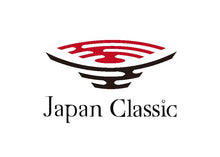【Japanese Pottery】Snake Kiln (Jagama): Japan’s Elongated Single‑Chamber Climbing Kiln
About the Author
Hayato Eihara
I am a Japanese resident living in Japan!
With years of experience, I share in-depth and detailed information about Japan with the world.
As part of my mission to promote Japanese culture, I also run Japan Classic, an online shop specializing in unique, high-quality tableware. If you're interested, feel free to check it out!
Table of Contents
- 1. Snake Kiln (Teppō‑gama; Ryū‑gama) 15th Century–Present: Horizontal Flame Type (Semi‑Inverted Flame Type)
- 2. Application of the Snake Kiln (蛇窯, Teppō‑gama; 龍窯, Ryū‑gama)
1. Snake Kiln (Teppō‑gama; Ryū‑gama) 15th Century–Present: Horizontal Flame Type (Semi‑Inverted Flame Type)
A snake kiln (蛇窯, snake kiln) is a type of noborigama (登窯, climbing kiln) consisting of a single elongated firing chamber. From above, its rectangular form resembles laid bamboo segments, earning it the name wari‑take‑shiki (割竹式, split‑bamboo style).
Although sometimes confused with multi‑chamber split‑bamboo climbing kilns, the snake kiln is fundamentally single‑chambered. It is called teppō‑gama (鉄砲窯, “gun kiln”) because its shape resembles a horizontally laid firearm, and in China and Taiwan it is likened to a dragon and referred to as ryū‑gama (龍窯, “dragon kiln”).
Flames rise from the firebox (焚口) toward the chimney at a consistent incline. In a wide snake kiln, flames struggle to reach the side walls, risking uneven firing where central areas may overfire while peripheral zones remain underfired. To mitigate this, side‑feed openings are created along the kiln’s length to introduce fuel directly into cooler areas.
Flames follow the path of least resistance—called the fire path (火道)—creating hot spots along that route. Side‑feed holes compensate by allowing wood to be added where heat is insufficient.
Initially, large logs do not ignite efficiently; small split hardwood pieces are added first to gradually raise the temperature. Combustion consumes oxygen and heat, causing a temporary drop in temperature before it rises again. Rather than adding large amounts of fuel at once—which can lower temperature and induce oxygen deficiency—fuel is added incrementally. Each addition is allowed to burn almost completely before adding more, maintaining optimal airflow and steadily increasing temperature.
2. Application of the Snake Kiln (蛇窯, Teppō‑gama; 龍窯, Ryū‑gama)
Viewed from the firebox, the kiln appeared almost completely filled with ware. Although its atmosphere resembled an anagama (穴窯, cave kiln), its plan view was rectangular, more akin to a wood plane than a gun. It lacked side‑feed openings and was specialized for ash‑covered ware.
Not limited to single‑chamber snake kilns, more potters now maintain kilns dedicated to specific functions. Common examples include overglaze kilns (上絵窯, overglaze kiln) and bisque kilns (素焼き窯, bisque kiln), while some also use separate kilns for wood‑ash effects, hidasuki (火襷, wood‑resist patterns), or red glazes (緋色, scarlet glaze).
A notable snake kiln example exists in Tamba’s Tachikui region. Although snake kilns are fundamentally single‑chamber, the local noborigama (登窯, climbing kiln) with nine firing chambers is colloquially called a snake kiln due to its elongated form.
Constructed in the Meiji era, this kiln measures 47 m in length. It is occasionally fired during local events and is designated as a prefectural cultural property known as the “Tamba Tachikui Noborigama.”
Entering under its roof reveals its impressive scale and antique character.
Unlike typical climbing kilns, it has less height and no lateral bulge, presenting a long, narrow exterior. The surviving snake kiln lies horizontally in that location.
Brighten Up Your Table.
We deliver vibrant, high-quality pieces directly from Japan to add color and elegance to your dining experience.







Leave a comment